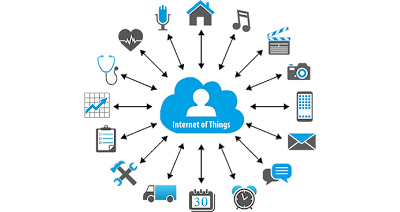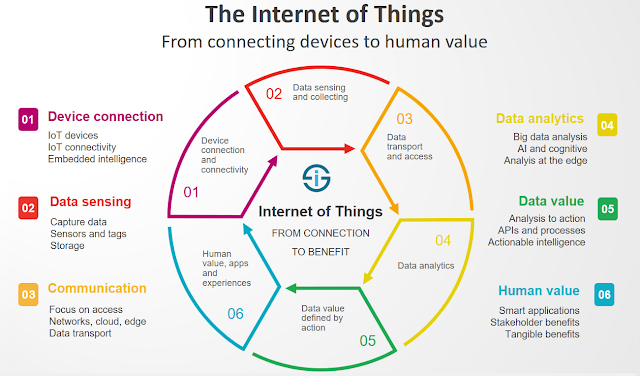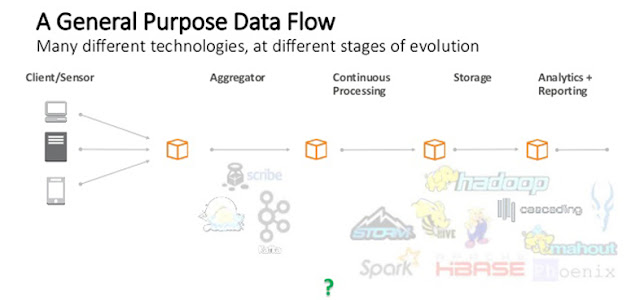What is Internet of Things (IoT) & how it works?
April 27, 2018What is IoT ?
The Internet of Things is the concept of connecting any device to the Internet and to other connected devices. The Internet of Things (IoT) is the network of physical devices, vehicles, home appliances and other items embedded with electronics, software, sensors, actuators, and connectivity which enable these objects to connect and exchange data. The IoT is a giant network of connected things and people – all of which collect and share data about the way they are used and about the environment around them. Each thing is uniquely identifiable through its embedded computing system but is able to inter-operate within the existing Internet infrastructure.
How IoT works?
IoT consists of all the web-enabled devices that collect, send and act on data they acquire from their surrounding environments using embedded sensors, processors and communication hardware. These devices, often called "connected" or "smart" devices, can sometimes talk to other related devices, a process called machine-to-machine(M2M) communication, and act on the information they get from one another. Humans can interact with the gadgets to set them up, give them instructions or access the data, but the devices do most of the work on their own without human intervention. A complete IoT system integrates four distinct components: sensors/devices, connectivity, data processing, and a user interface.
1) Sensors/Devices
First, sensors or devices collect data from their environment. This could be as simple as a temperature reading or as complex as a full video feed.
2) Connectivity
Next, that data is sent to the cloud, the sensors/devices can be connected to the cloud through a variety of methods including: internet, Wi-Fi, Bluetooth etc. Each option has tradeoffs between power consumption, range and bandwidth. Choosing which connectivity option is best comes down to the specific IoT application, but they all accomplish the same task: getting data to the cloud.
3) Data Processing
Once the data gets to the cloud, software performs some kind of processing on it. This could be very simple, such as checking that the temperature reading is within an acceptable range. Or it could also be very complex, such as using computer vision on video to identify objects (such as intruders in your house).But what happens when the temperature is too high or if there is an intruder in your house? That’s where the user comes in.
4) User Interface
Next, the information is made useful to the end-user in some way. This could be via an alert to the user (email, text, notification, etc). A user might have an interface that allows them to proactively check in on the system. For example, a user might want to check the video feeds in their house via a phone app or a web browser. However, it’s not always a one-way street. Depending on the IoT application, the user may also be able to perform an action and affect the system. For example, the user might remotely adjust the temperature in the cold storage via an app on their phone.
And some actions are performed automatically. Rather than waiting for you to adjust the temperature, the system could do it automatically via predefined rules. And rather than just call you to alert you of an intruder, the IoT system could also automatically notify relevant authorities.
Connected devices generate massive amounts of Internet traffic, including loads of data that can be used to make the devices useful, but can also be mined for other purposes. All this new data, and the Internet-accessible nature of the devices, raises both privacy and security concerns. But this technology allows for a level of real-time information that we've never had before. We can monitor our homes and families remotely to keep them safe. Businesses can improve processes to increase productivity and reduce material waste and unforeseen downtime. Sensors in city infrastructure can help reduce road congestion and warn us when infrastructure is in danger of crumbling. Gadgets out in the open can monitor for changing environmental conditions and warn us of impending disasters.











0 comments